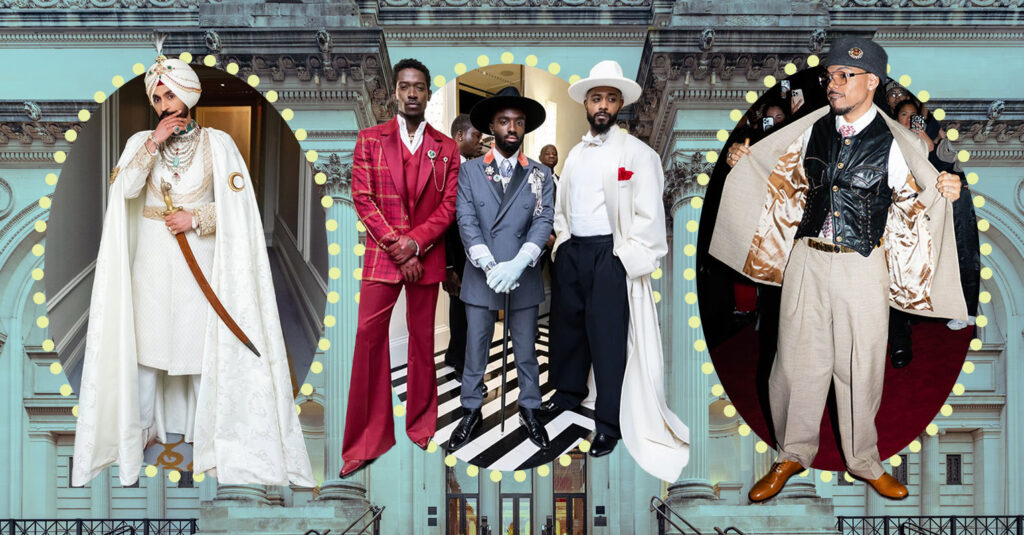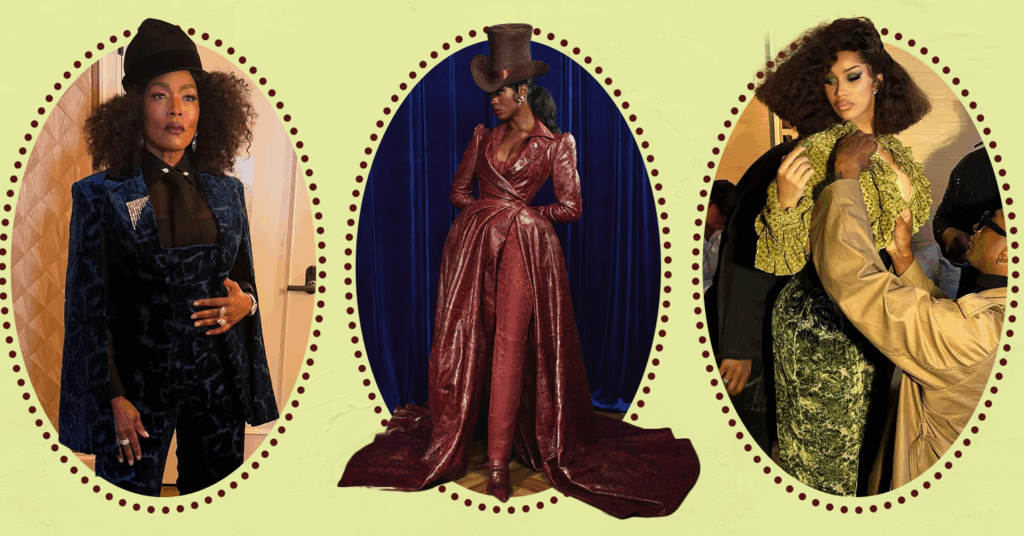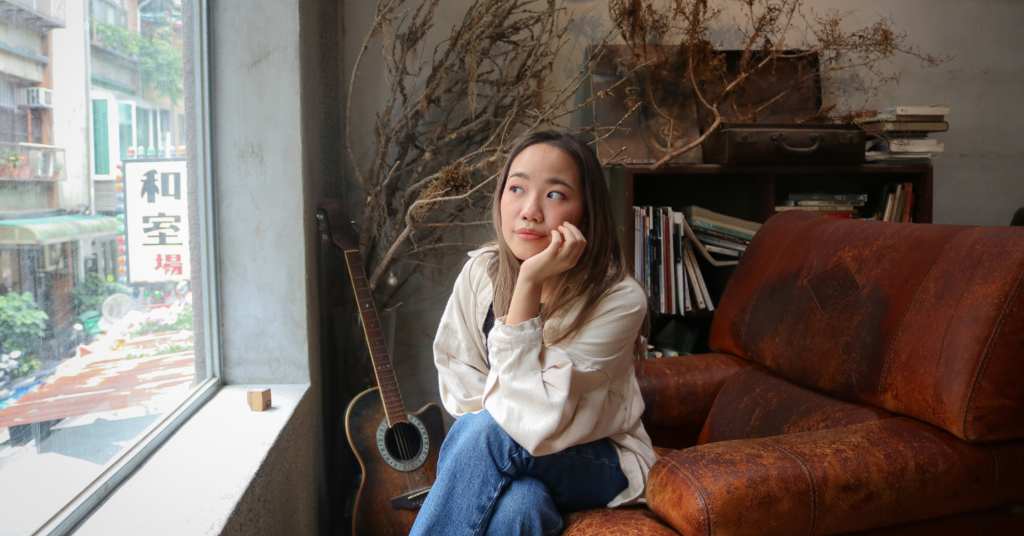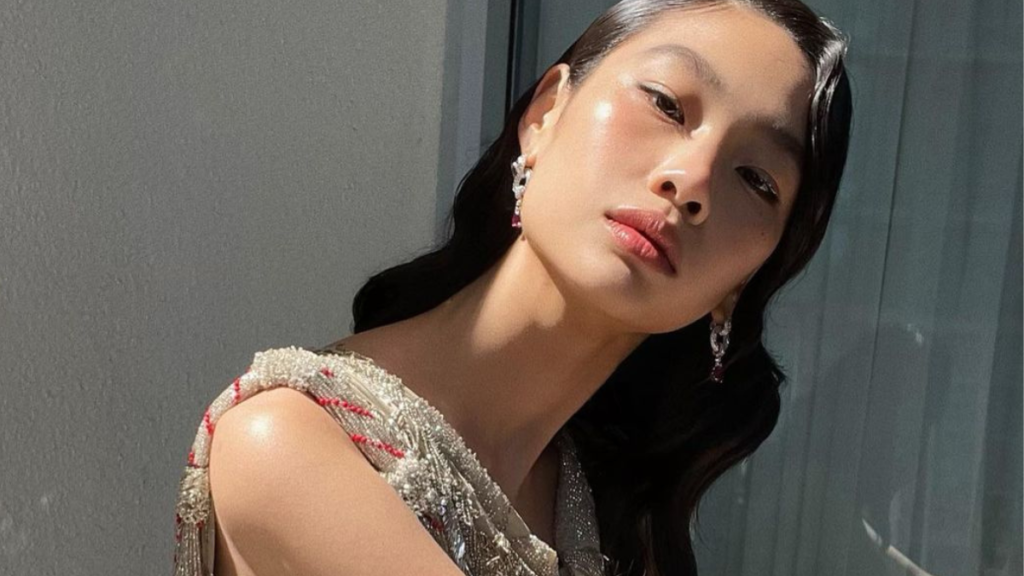Everything To Know About the 2025 Met Gala

The 2025 Met Gala is set for Monday, May 5, at the Metropolitan Museum of Art in New York City, kicking off the Costume Institute’s spring exhibition. This year’s theme is Superfine: Tailoring Black Style, a celebration of Black sartorial history and innovation. The gala’s official dress code is “Tailored for You,” a nod to the exhibition’s focus on menswear and personal style.
The gala will be co-chaired by actor Colman Domingo, F1 champion Lewis Hamilton, music moguls A$AP Rocky and Pharrell Williams, along with Vogue editor-in-chief Anna Wintour (with basketball star LeBron James as honorary chair). A host committee of Black stars, including Olivier Rousteing, Doechii, Usher, André 3000, Janelle Monáe, and many others, rounds out the leadership.
Theme Origins
Superfine: Tailoring Black Style takes its title and inspiration from Barnard College professor Monica L. Miller’s award-winning 2009 book Slaves to Fashion: Black Dandyism and the Styling of Black Diasporic Identity. The Costume Institute drew on Miller’s research to frame the exhibition as a 300-year showcase of Black dandyism. The exhibit will be organized into 12 thematic sections: Ownership, Presence, Distinction, Disguise, Freedom, Champion, Respectability, Jook, Heritage, Beauty, Cool, and Cosmopolitanism with each illustrating how self-presentation has been a method of resistance for Black people. The exhibition (and by extension the gala theme) will explore how Black communities have long used tailored clothing and accessories as tools of agency, rebellion, and activism.
Miller herself will serve as guest curator of the show alongside Costume Institute head Andrew Bolton. In interviews, Miller emphasizes that the exhibition is designed to reframe fashion history within the context of Black style. The show will open just days after the gala on May 10 and run until October 26.
The exhibition aims not only to display garments and art but to make a cultural statement. According to the Met’s description, the narrative shows how, during the 18th-century Atlantic trade, gave some Black people access to luxury clothing and goods. This then created “a new culture of consumption fueled by the slave trade, colonialism, and imperialism” that blended African and European style traditions. Over the centuries, this culture produced the Black dandy: someone who uses exuberant attention to dress as a strategy of self-fashioning. Miller and Bolton explained that the exhibition will include paintings, photographs, accessories, and garments to showcase this stylish resistance. Bolton called the exhibition “a really important step in our commitment to diversifying our exhibitions and collections,” especially after recent years of expanding the museum’s featuring of Black, Indigenous, and People of Color designers.
Black Dandyism
At its core of Superfine: Tailoring Black Style is Black dandyism. As Vogue explained, “dandyism, for the unacquainted, is an exuberant attention to dress.” Miller defined it simply as “dressing wisely and well,” a personal aesthetic that Black men have long used to reshape identity. She told The Met it is “a strategy and a tool to rethink identity, to reimagine the self in a different context to really push a boundary on who and what counts as human,” even during times of slavery.
https://www.instagram.com/p/DA6y0P4yaUr
The Atlantic slave trade brought about a trend in which European slave owners would “dandify” their slaves in a display of wealth and ownership. Through this, both free and enslaved Black people began to reclaim their ownership by subverting the pre-established connotations of the dandified look. Black men and women utilized Black dandyism to reimagine future possibilities both politically and culturally. The birth of Black dandyism was more than just an appreciation of style and aesthetics, it was a powerful reclamation of power and ownership over the Black identity.
Central to the identity of Black dandyism is queerness. As Miller explains, Black dandyism was an opportunity to “to convey the ways in which identity is dependent on, and can be manipulated by, conventions of dress.” The Jazz Age saw women dressing in masculine fashions, with many of them belonging to the queer community. Blues singers, like Gladys Bentley and Ma Rainey, used Black dandyism as an expression of queerness through both physical aesthetics and song lyrics. Modern, queer artists like Queen Latifah and Janelle Monáe have also embraced Black dandyism in their own way, bringing the tradition into yet another era.
Icons and Innovators
Across generations, Black creative talents have shaped the narrative of style. Legendary Vogue editor André Leon Talley is often cited as the seminal Black dandy. His towering presence in couture (the first Black man regularly front-row at Paris shows) and his signature capes embodied the idea that Black life could be bougie and regal. Similarly, the iconic Dapper Dan of Harlem, New York, brought luxury fashion to the street: in the 80s and ’90s he custom-made and tailored logo-heavy clothes for hip-hop’s elite. Years later, after a Gucci controversy over copying his designs, the fashion house eventually partnered with Dan to reopen his famed 125th Street atelier. Today the Gucci × Dapper Dan Harlem atelier still operates, creating a full-circle moment for the tailor.
Among other designers and stylists, several names stand out. Telfar Clemens of brand TELFAR is known for his mantra, “It’s not for you, it’s for everyone.” Since 2005 he’s built an inclusive, unisex line whose hero item, its Shopping Bags, have become a staple of accessible Black luxury seen on the likes of Oprah and Beyonce. American Designer Sergio Hudson, known for his monochromatic style, made headlines when Michelle Obama chose his plum-colored suit and coat for the 2021 inauguration. Another name you can’t not mention in this conversation is Image Architect Law Roach, the stylist turned creative director behind the most memorable Met Gala and red carpet looks in recent times. He’s been credited with recent “method dressing,” trend of Hollywood and fashion icon Zendaya calls him her “fashion soulmate, historian, and constant inspiration.” Roach has brought new visibility to Black excellence in styling, even writing a book on How to Build a Fashion Icon.
Together, these innovators and their predecessors form a web of Black creativity that this year’s theme aims to honor. Much of the gala’s build-up, explicitly connect past and present: from portraits up to today’s designers and celebrities. This Met show will examine “the Black dandy as a subject,” and guests at the gala are expected to channel that into their red-carpet looks, with emphasis on tailoring, menswear elements, and nods to Black style icons.
The Gala Details
- Date & Location: Monday, May 5, 2025, at the Metropolitan Museum’s Fifth Avenue building. (Red carpet begins around 4:30pm EST).
- Theme: Superfine: Tailoring Black Style tied to the Costume Institute’s spring 2025 exhibition.
- Dress Code: “Tailored for You.”
- Co-Chairs: Colman Domingo, Lewis Hamilton, A$AP Rocky, Pharrell Williams, and Anna Wintour. LeBron James is honorary chair.
- Host Committee: A diverse group drawn from fashion, music, sports and culture. Notables include Academy Award-Winners Regina King and Spike Lee, athletes Angel Reese and Shi’Carri Richardson, musicians Doechii, Usher, André 3000, Janelle Monáe, Tyla, and more.
- How To Watch: You can livestream the red carpet arrivals on Vogue’s digital platforms starting from 6PM EST. Viewers can tune in online (Vogue.com, Vogue’s YouTube, Vogue’s TikTok) to see the looks and interviews as celebrities arrive.
A Historic Moment for Black Fashion
For many reasons, Fashion insiders are calling this Met Gala a watershed for Black fashion. In the words of Law Roach during a toast in a viral video the weekend before the gala, “They done f*ked up and made the Met ball Black!” The gala will visibly place Black style at the center of fashion’s biggest night, from the theme and décor to the co-chairs and crowds. It celebrates legacies that were long ignored, uplifted at an institution that has pledged to be more inclusive.



